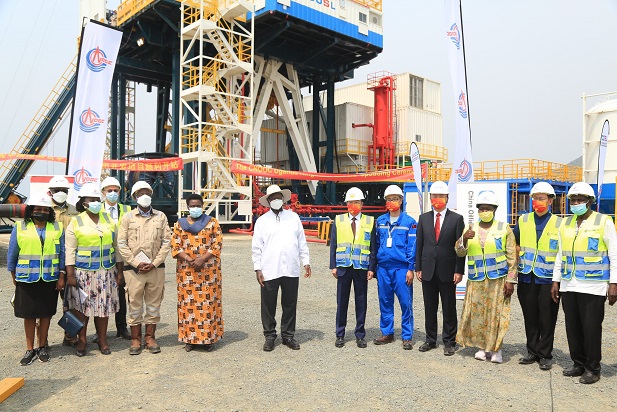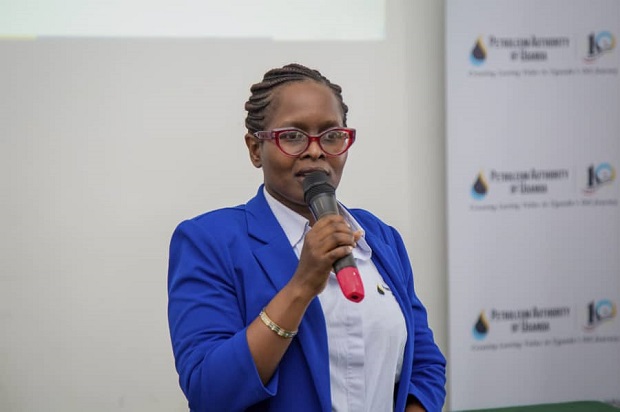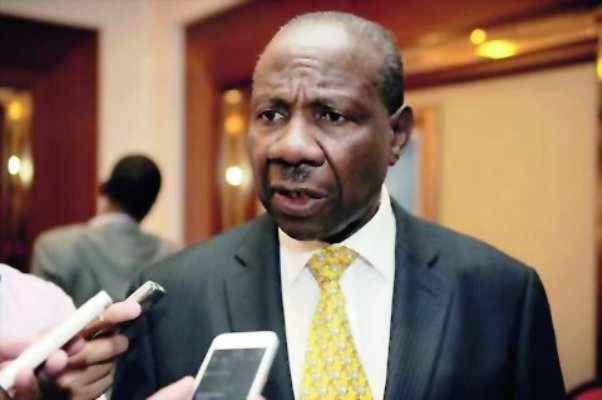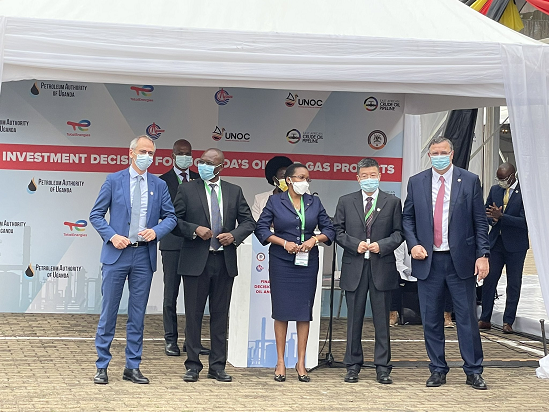President Museveni (in white shirt) is joined by other officials to commission the spudding(Commencement of Drilling) of Kingfisher Oilfield wells.
President Yoweri Museveni Tuesday officially commissioned the spudding/drilling of oil wells for Kingfisher oilfield in Buhuka, Kikuube district as Uganda moves to have her first oil in 2025.
This is after CNOOC’s oil rig arrived in the country late last year.
The Kingfisher Oil Development Area is managed and operated by CNOOC Uganda, but the oil projects are managed by joint venture partners including TotalEnergies EP Uganda with 56.67% shareholding, CNOOC Uganda with 28.33% and Uganda National Oil Company (UNOC) with 15%.
President Museveni says he’s hopeful Uganda will discover more commercial oil.
“The 6.5 billion barrels of oil (already discovered) is 40% of the Albertine valley. There’s another 60% of that valley where we are going to look for more oil. We may end up with more oil than the one we are having,” Museveni said, adding that the Moroto-Kadam basin in Karamoja is promising.
According to Energy Ministry, the Kyoga basin in Lango and the Hoima basin which is between Hoima and Masindi are other potential areas with oil. The Hoima basin is an old basin around Kafu area that happened when lifting took place and covered the area.
Speaking at the same event, Ruth Nankabirwa, the Minister of Energy and Mineral Development, described the latest development as an exciting moment because the commissioning of drilling of oil wells at the Kingfisher oilfield comes less than a year after the announcement of Final Investment Decision (FID).
She added that Uganda has embarked on an ambitious process of encouraging more exploration to be undertaken to enable more discovery of resources.
Uganda conducted the first licensing round which resulted in the award of three exploration licenses to Oranto Petroleum Ltd and Armour Energy Ltd in 2017.
Additionally, the Government announced the second licensing round in May 2019 with five blocks on offer and this month, Government granted exploration licenses for two of the blocks; Turaco and Kasurubani blocks.
“Energy Ministry is planning to announce the third licensing round this year around May. Besides the Albertine Graben, Uganda has other basins that have the potential for oil and gas. Government is carrying out geological mapping and geophysical surveys in new areas including Moroto in Karamoja,” Nankabirwa said.
Museveni Applauds China, France
President Museveni also applauded China and France for supporting Uganda to exploit her oil resource.
“We started with smaller companies like Heritage, Tullow etc. Then, we got stronger companies like CNOOC and Total in terms of money, experience and resources. I thank CNOOC for moving. I hope even others are moving. I want to thank the Chinese Government. These are Government companies, so they are encouraged by their government (to invest in Uganda). I also thank the Government of France, we haven’t found trouble with them. I heard the European Parliament (calling for the stopping of oil pipeline) who we told to go to hell, but I didn’t hear the French Government making trouble,” Museveni said.
He added that oil is not a problem at all if handled well.
“Carbon dioxide which comes from these fossil fuels isn’t necessarily a problem if handled well because it’s good for plants. It’s greed which eventually causes problems but for us here we are very careful. We shall develop our oil resource but also develop solar energy because it’s our ancient energy as Africans. We are going to use the solar power, wind power and hydro power. We shall use all these but also the oil as we develop the others. When the others are fully developed, petroleum is needed for other products not only for fuel. The shirt I’m putting on has got polyester which is from petroleum, we need tar for tarmac roads, we can get fertilizers from petroleum, we can use petroleum responsibly,” Museveni said.
He said countries causing global warming are greedy for money. “Therefore, this petroleum resource will be here for a long time. We shall use it,” he said.
He asked Ugandans especially people around the oilfields to ‘kulegya’ (be strategic).
“The biggest local content which all of you can participate in is agriculture, producing food because all these people working in oil fields need food; Eggs, chicken, milk, vegetables,” Museveni said.
About Kingfisher Oilfield
Ernest N.T. Rubondo, Executive Director at Petroleum Authority of Uganda (PAU) said the Kingfisher oil field is estimated to have a total of 560 million barrels of oil in place, out of which, 190 million barrels of oil (33%) is expected to be produced over a period of 20-25 years.
“The oil field is expected to have a maximum production of 40,000 barrels of oil per day for five years after which, production will begin to decline gradually,” Rubondo said.
The Kingfisher oilfield has 31 wells that are going to be drilled.
On the other hand, the Tilenga project has over 420 wells and will produce 190,000 barrels per day at maximum production.
“20 of the 31 wells will be used to produce oil while 11 of the wells will be used to inject water in the reservoir to help improve production,” he said.
He added that CNOOC’s brand new state of the art rig was specially designed for the kingfisher field and is the strongest that has been used in the country to date, consuming about 6 mega watts of power. It has the capacity to drill up to 8 km long, with noise suppressing technology making it more environmentally friendly. “The wells to be drilled in the Kingfisher field will vary from 2600m to 7400 metres in length depending on how far the targeted part of the reservoir is from the location, where the drilling will start,” he said.
He revealed that investment in development of the Kingfisher oilfield is expected to cost over US$2 billion over the next 3 years until shortly after production starts and over US$1.5 billion over the remaining 20 years of the life of the oil field.
What Start Of Oil Drilling Means
Eng. Irene Batebe, the Permanent Secretary at Energy Ministry, said the start of oil drilling is a big milestone because it signifies that Uganda is about to join the largest oil producers in Africa; “There’s expectation that will shall have additional petroleum resources,” she said.
Proscovia Nabbanja, the CEO at UNOC, described yesterday’s event as exciting for Uganda’s oil and gas industry.
She said when commercial oil story was discovered in 2006, it was anticipated that the resource would be brought out of the ground sooner than the 2025 target.
She however said that it has been a deliberate effort to institutionalize the sector by setting up the enabling environment to create a business out of the oil and gas sector and also attract the different sector players.
“It is exciting moment for us as a national oil company, but also as a country because there has been general fatigue within the country on when first oil will come out. Today isn’t first oil, but it’s certainly a big step in the right direction. It’s the day we commission the drilling of wells that will lead us into commercial production,” she said.
“This means that when we produce these resources it will put Uganda on the list of oil producers, we are going to see more investments and resources injected into the country within the next three to five years but also the substantial revenues that will come from the production of this oil will push Uganda’s economy. Every Ugandan should be excited about it. There’s value to be retained in country, there’s value to be got out of the projects and this will make the economy better,” UNOC’s Nabbanja added.






